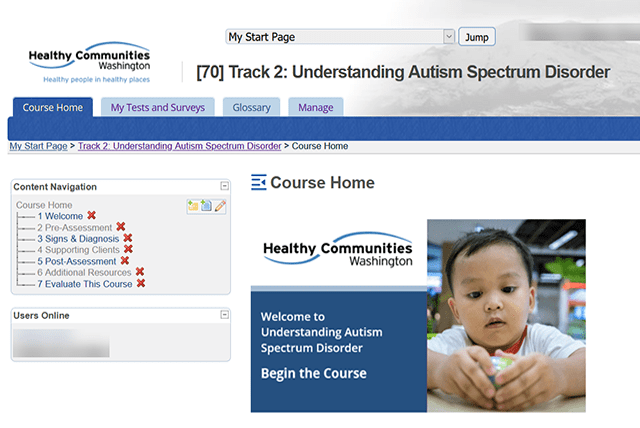Asking questions is always the best place to start any training project. A standardized process for this is called a “training needs analysis” or “assessment.” A training needs analysis is a tool that helps trainers plan for effective training programs. It includes information about the audience, content, delivery methods, and other factors that will affect how well the training works.
And going through the process before you even start on creating a custom program or deciding on a training license will pay off. It’s important for creating the kinds of professional development opportunities that will improve the knowledge, competence, and effectiveness of your staff.
Before you do anything to train your staff, find out what your stakeholders need from a program and what your employees need to learn. This will help you create a program that has a greater chance of success.
Training Needs Analysis Tips
Too many programs either skip the step of performing a needs assessment (read more on the important step of performing a needs analysis). Or they make mistakes when conducting one. But such messiness could set the tone for your entire program. It will leave you with participants who spend more time looking at their phones than engaging with learning content. Wasted funds are even worse than unsatisfied students.
One common mistake is looking too narrowly at your organization when documenting needs. For example, some administrators know they need to address a knowledge gap because of compliance requirements or industry guidelines. But they forget to consider if they have enough qualified trainers to handle a new online program. They assume that uploading a PDF to the website will be enough to train all their staff. Looking at only one piece of the puzzle will solve exactly one piece.
When employers start planning for an online training program, they should minimally start by looking at what their students need, what their organization needs, and what kind of technology needs. Likely, your organization will have more factors you’ll need to assess.
Your Capacity for Needs Assessments
Training a public health workforce is complex. The needs and wants of an entire agency are confusing. But you might already know how to do this.
Many programs have internal capacity for needs assessments that they forget they already know. Many public health programs, for example, are required to perform community needs assessments. If this is you, you’re already used to finding out what kinds of strategies can make positive health improvements in a community.
You can think about the skills you already have and turn them around to your own staff instead of focusing them on external community members.
To provide some value to your initiative, we’re suggesting some questions you can ask to get the most from your new training program.
Online Learning: Beginner’s Guide for Health Agencies
Your Online Learning: Beginner’s Guide for Health Agencies includes everything you’ll need to launch a successful online learning program for your staff.
Questions to Ask in a Training Needs Analysis
Who will attend the training?
Answering these questions will help you determine who should attend your training. You might also consider asking yourself why certain people would need to attend the training. This will help you decide whether the training is appropriate for everyone involved in the project.
Assess what your learners need to know. You might have internal requirements, such as yearly sexual harassment training, or a need for continuing education credits to keep certifications up to date. Or you may have results-based needs, such as finding a way for employees to serve more clients in a shorter amount of time. Looking at gaps in learning will help you identify how to address them.
You can ask your students what they want to learn, but proceed down this road with caution. Sometimes, they don’t know what they need and lack the terminology to tell you or have very little experience with (or love of) online learning.
Your job is to discover their core needs quickly and succinctly. Here are a few questions to begin with:
1 – On a scale of one to 10, how do you feel about your skill level related to your job?
2 – Why did you give yourself that score?
3 – Do you feel that you can handle your current scope of work?
Why should they attend?
If you’re planning to offer a training session or course, you should first think about why people should attend. Is there a particular skill or knowledge gap that needs to be filled? Are there any new tools or technologies that need to be introduced? Do you need to train employees on how to use a new software application? These are just some examples of reasons why people should attend your training.
Assume you’ve identified your training needs during the analysis. Then, back up and see what weaknesses you see in your infrastructure to make that happen. For example, you might need to hire a new fleet of trainers with skills in online teaching strategies. Or, your grant has reporting requirements, and you’ll need evaluation tools to address them. You can group stakeholders with your infrastructure, because they will also have requirements you’ll need to address, such as the ability to become self-supporting with your new courses.
Try questions like these:
4 – What are the skills necessary for this program to succeed?
5 – How many staff members have the skills necessary for this program to succeed?
6 – What hiring needs does our program have now?
7 – What hiring needs will our program have in the next month/quarter/year?
8 – Is there a process for identifying future training and professional development of the workforce?
9 – What could prevent the project team from learning these skills?
10 – What barriers could prevent this program from succeeding, past, present, and future?
What resources will be needed?
Knowing your needs for learning and your infrastructure will help greatly when you analyze what kind of delivery mechanism will work best for your agency. Once you’ve conducted the needs assessment, you can begin to decide on other factors. Consider whether you need self-paced learning, will offer courses with instruction, are looking to build a blended-learning program, what kind of data you need, etc. When you have a list of digital tools and features you need, you can measure them against providers and vendors that can help address those.
Here are some questions to help with access requirements:
11 – Does training need to be done in person?
12 – Can training be done remotely?
13 – How soon does training need to be completed?
14 – Do you have internal training resources already?
15 – What content formats work best with employees?
16 – What about learner backgrounds needs to be taken into account, for example, language requirements?
17 – Do you need to hire a vendor to build the training?
18 – Do you have subject matter expertise already? Who is that person? Do you need to hire someone?
19 – What kind of budget do you need to make your project happen?
20 – Can employees move through the training at their own pace?
Remember that a training needs analysis is just the beginning. Look at it as the launching point for a deep investigation into what it will take for your program to succeed. Jumping into something for the sake of it might seem like a fast solution, but you’ll be glad you took the time to look deeply into your requirements before you begin building.
Online Learning: Beginner’s Guide for Health Agencies
Your Online Learning: Beginner’s Guide for Health Agencies includes everything you’ll need to launch a successful online learning program for your staff.



